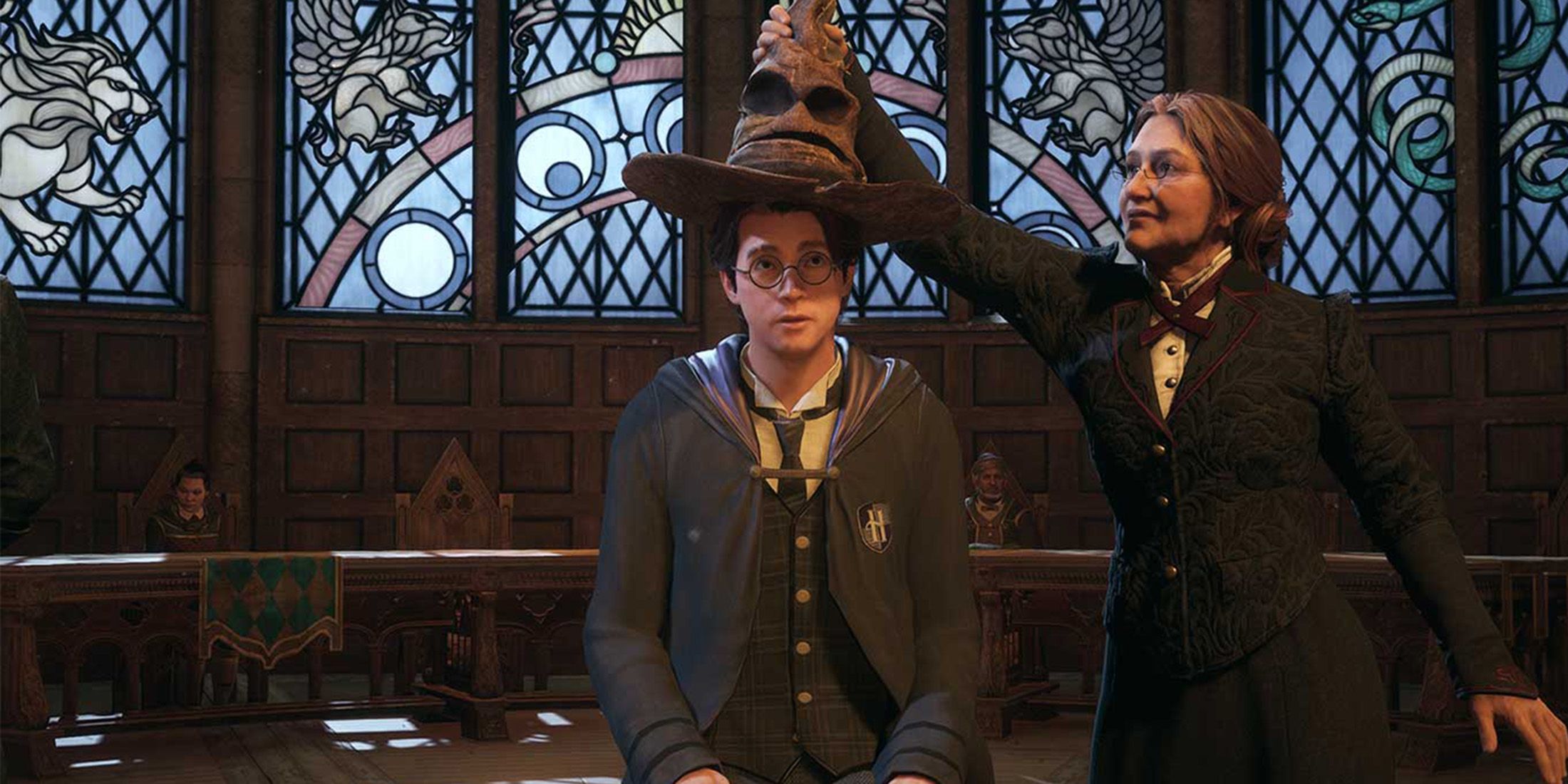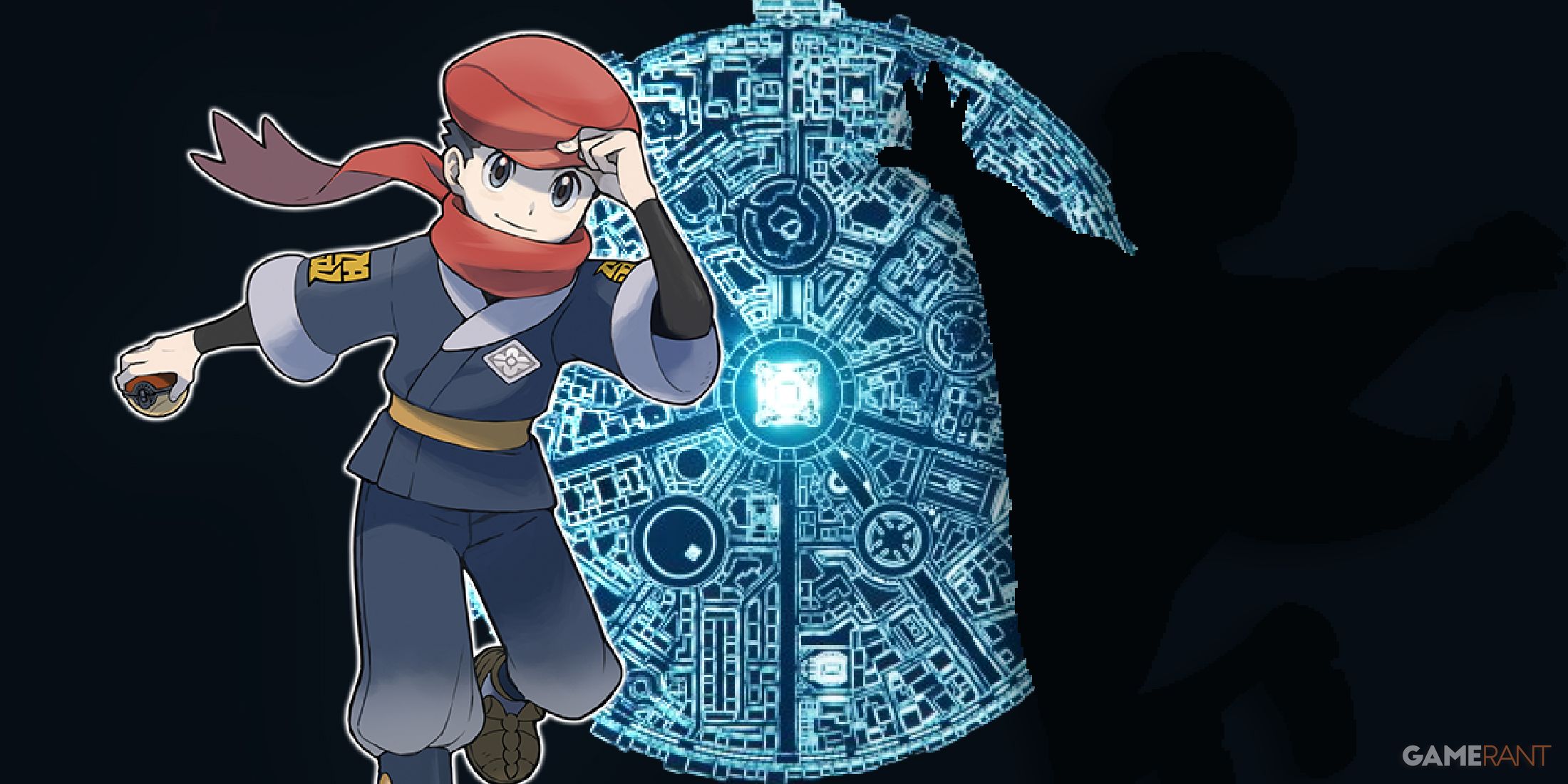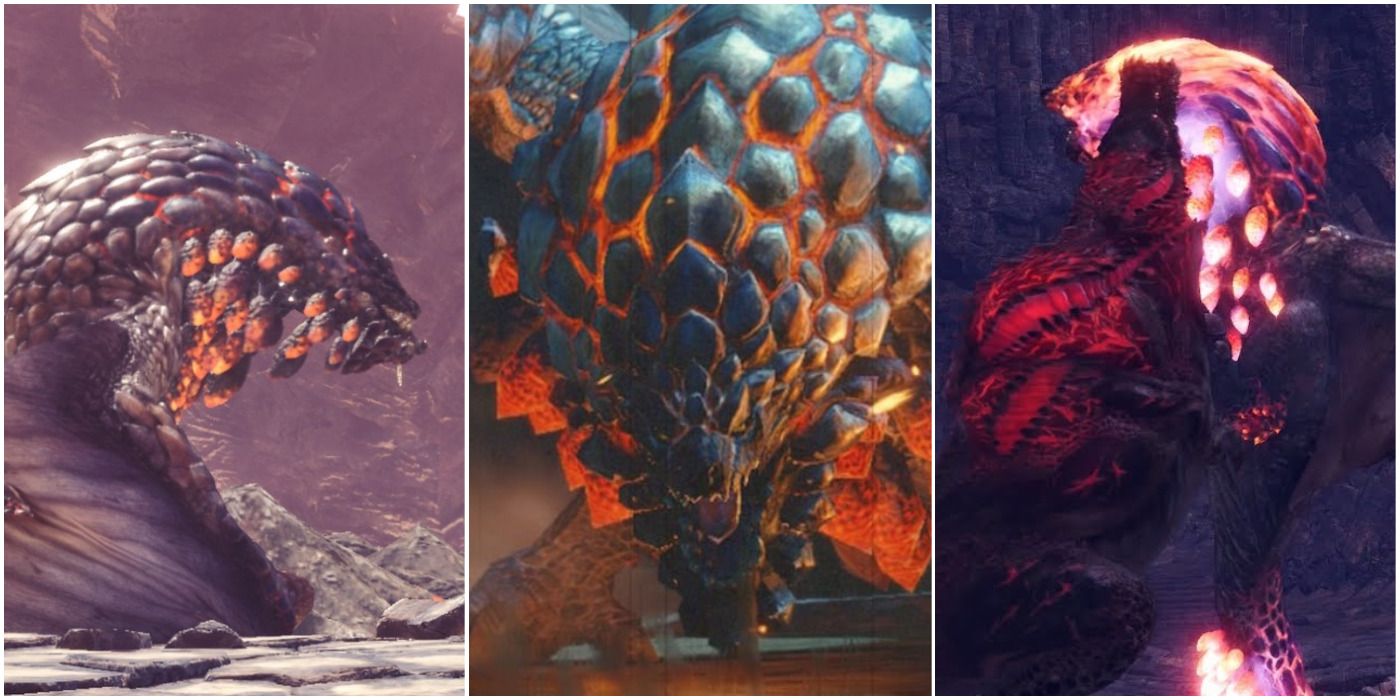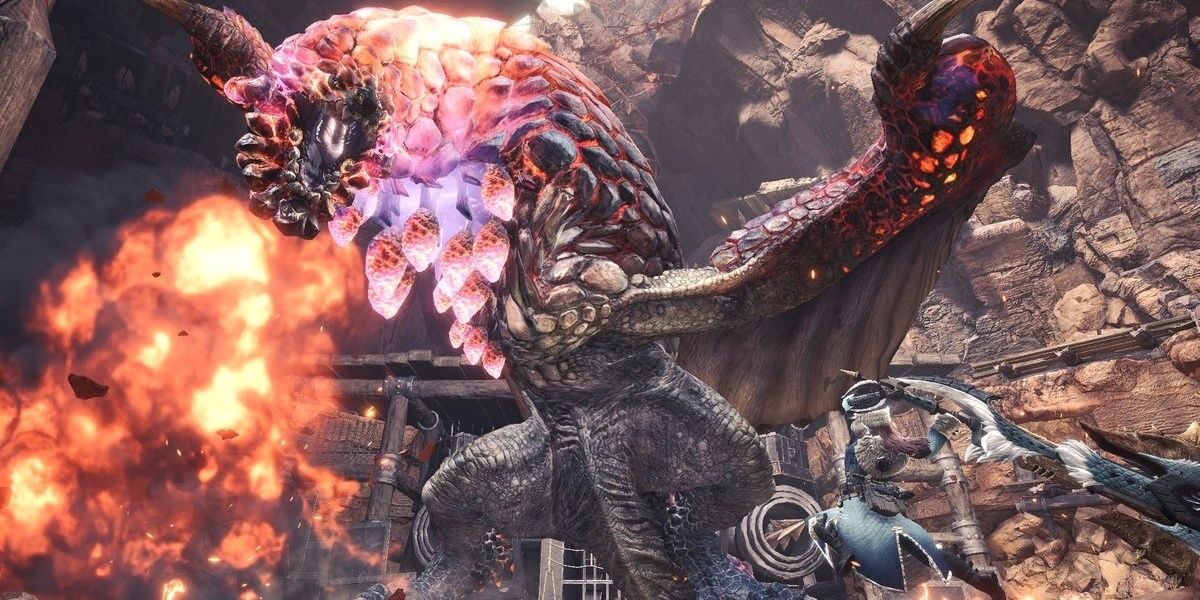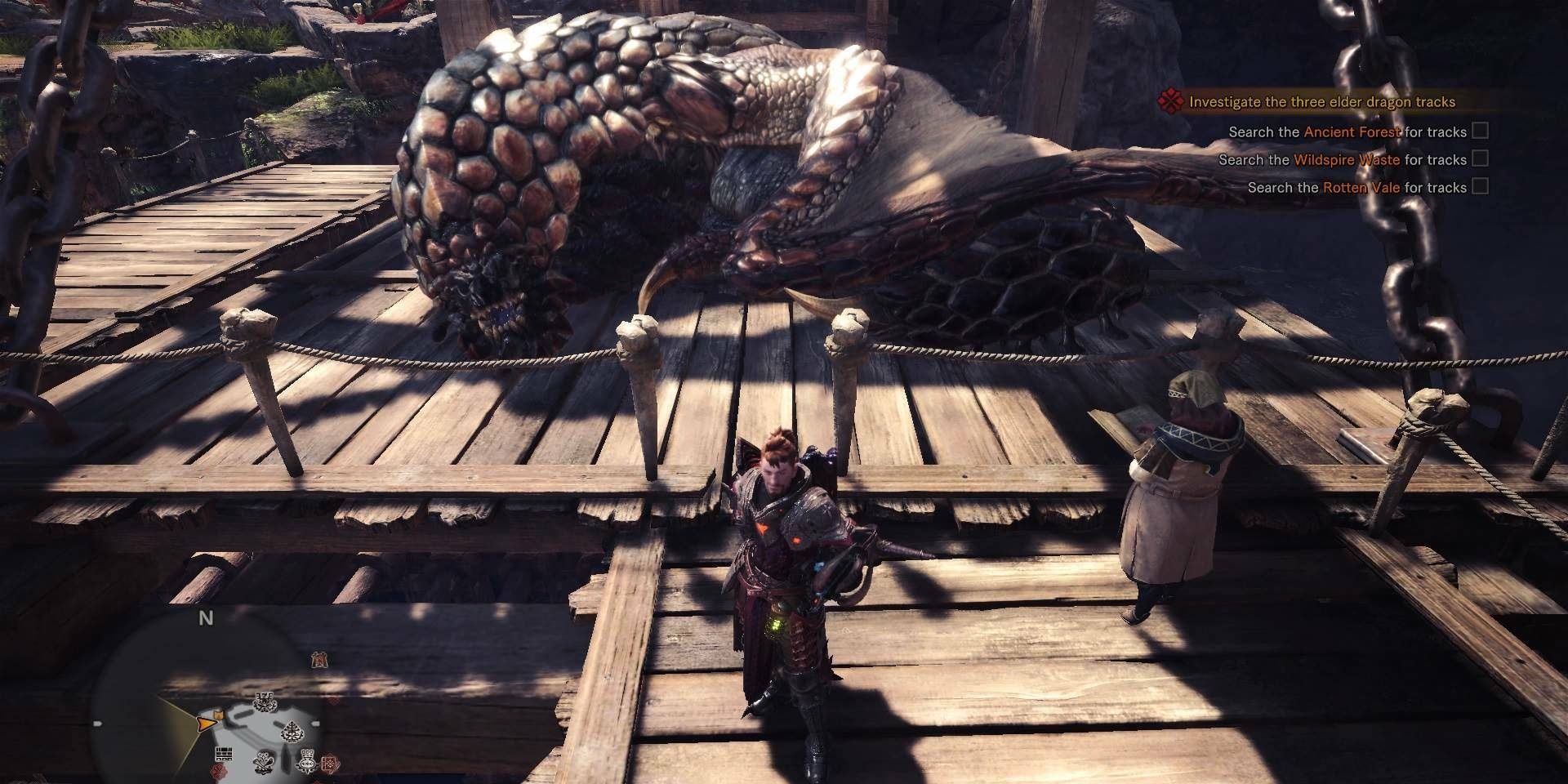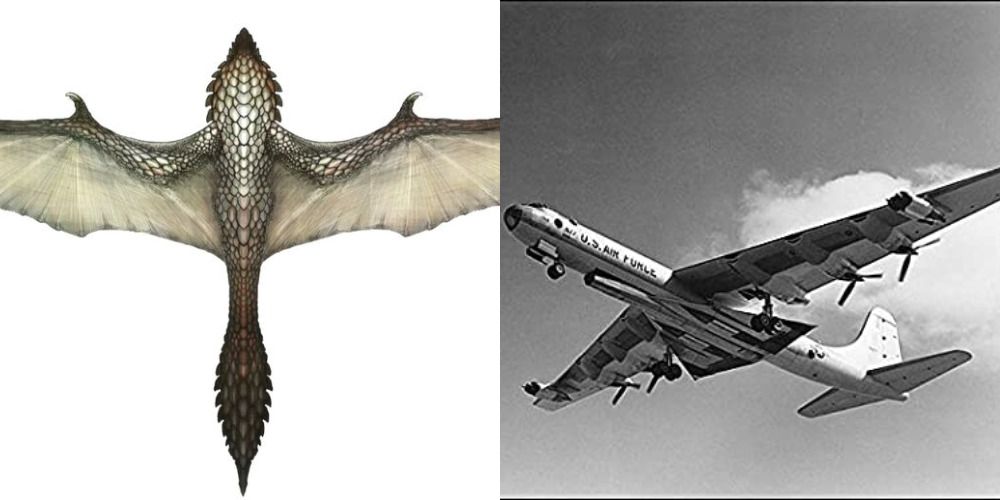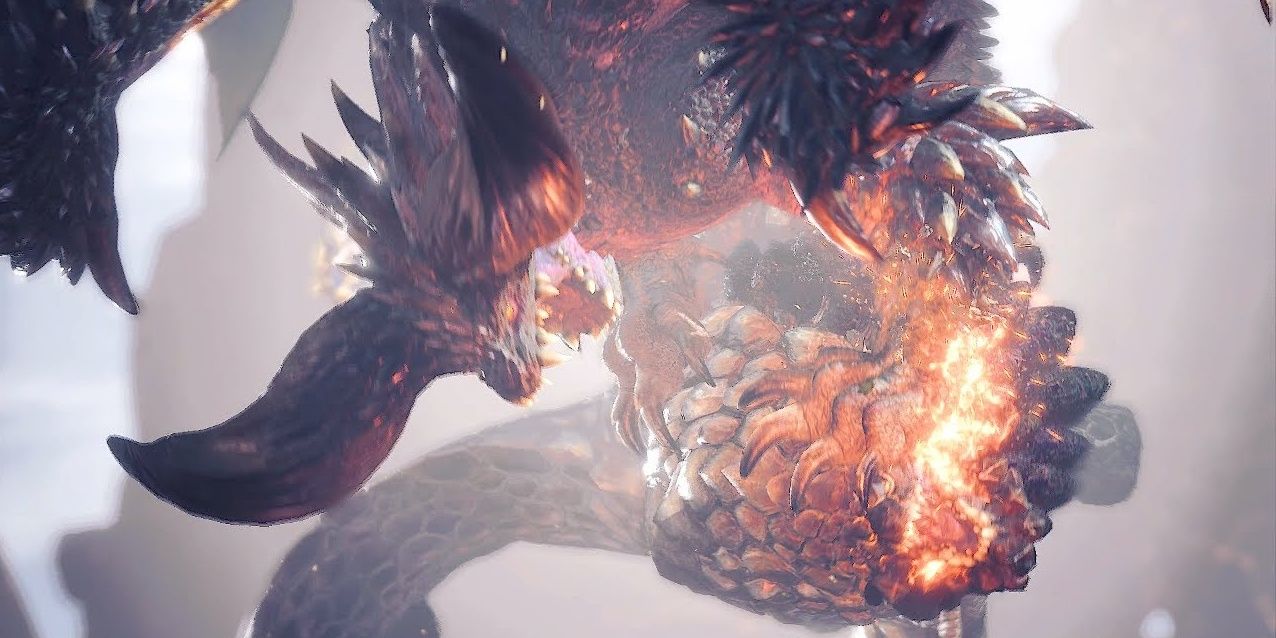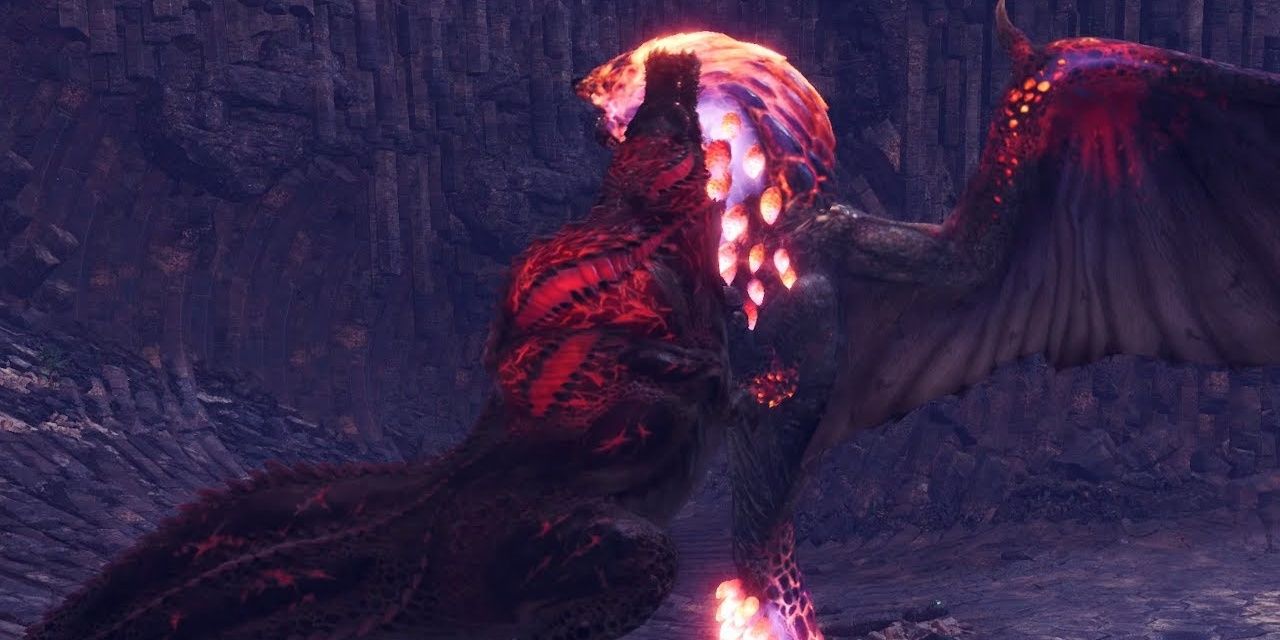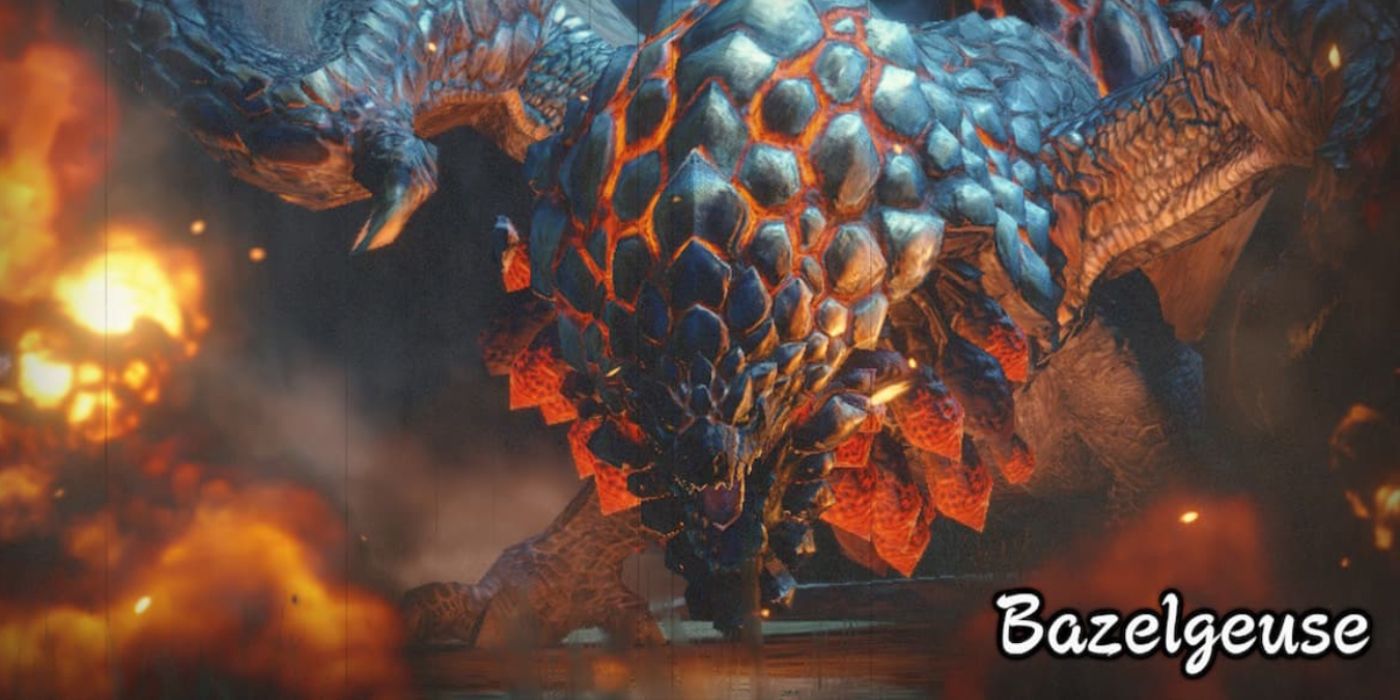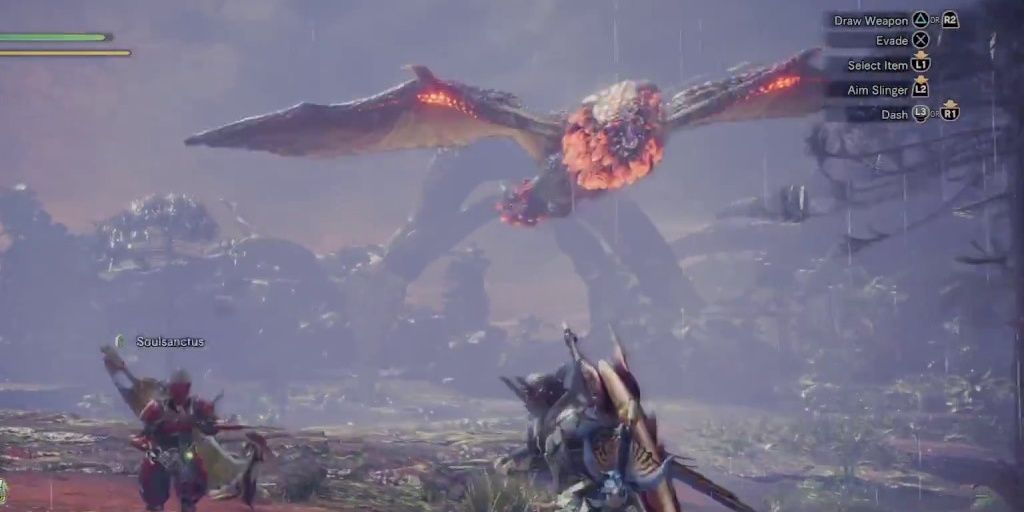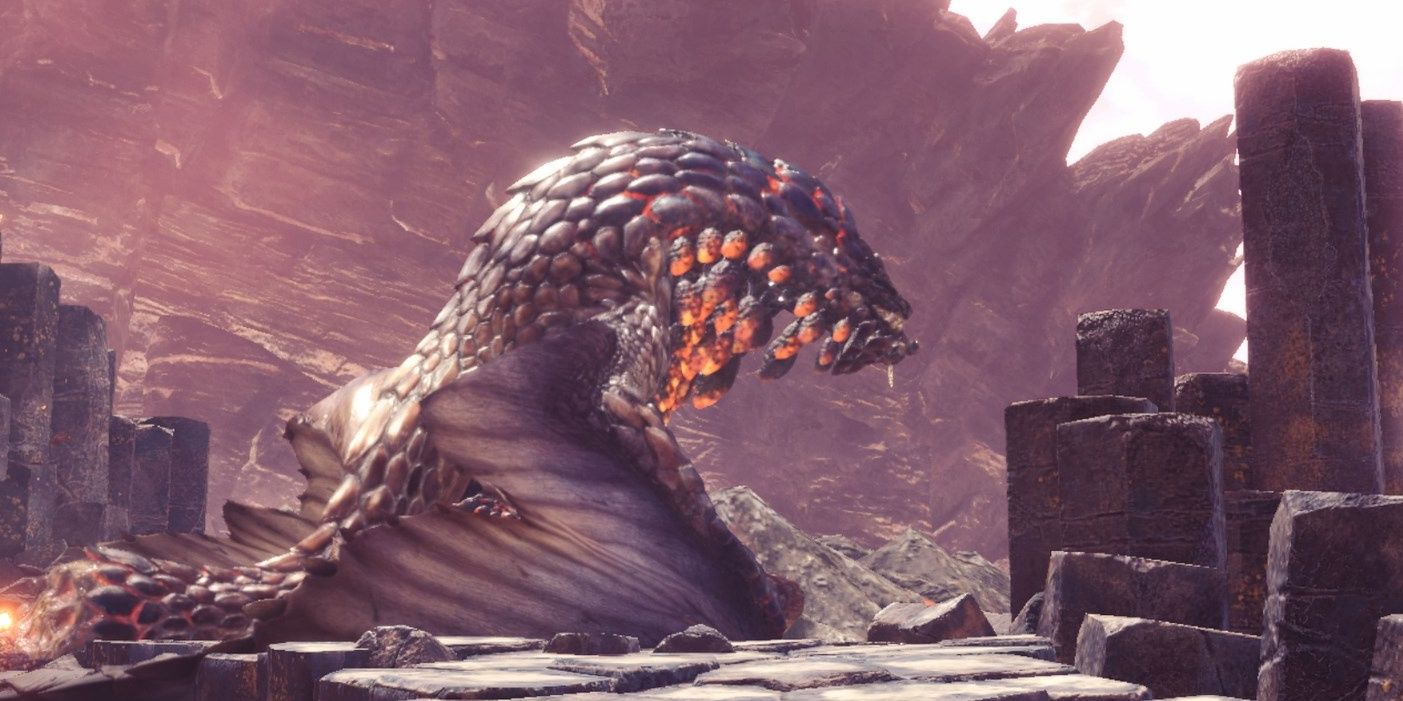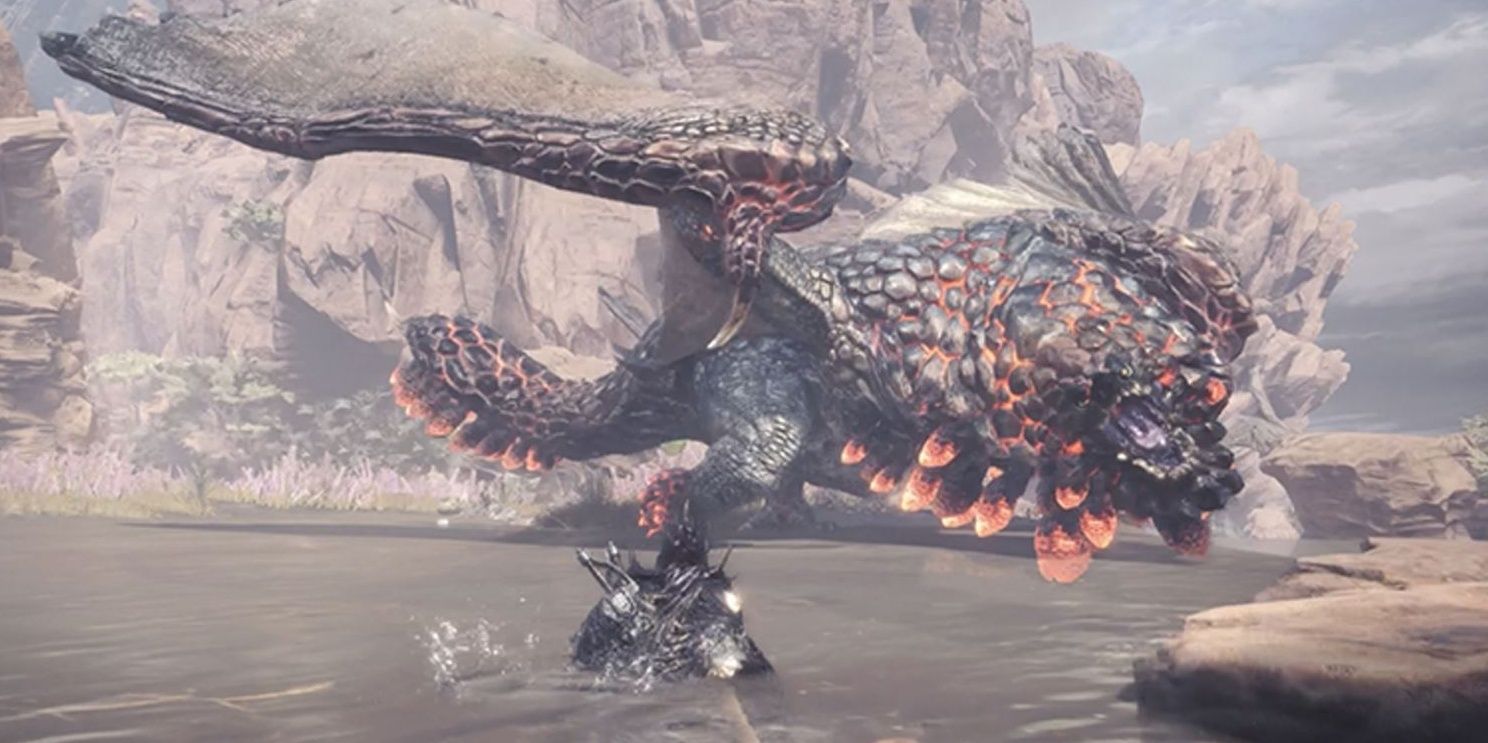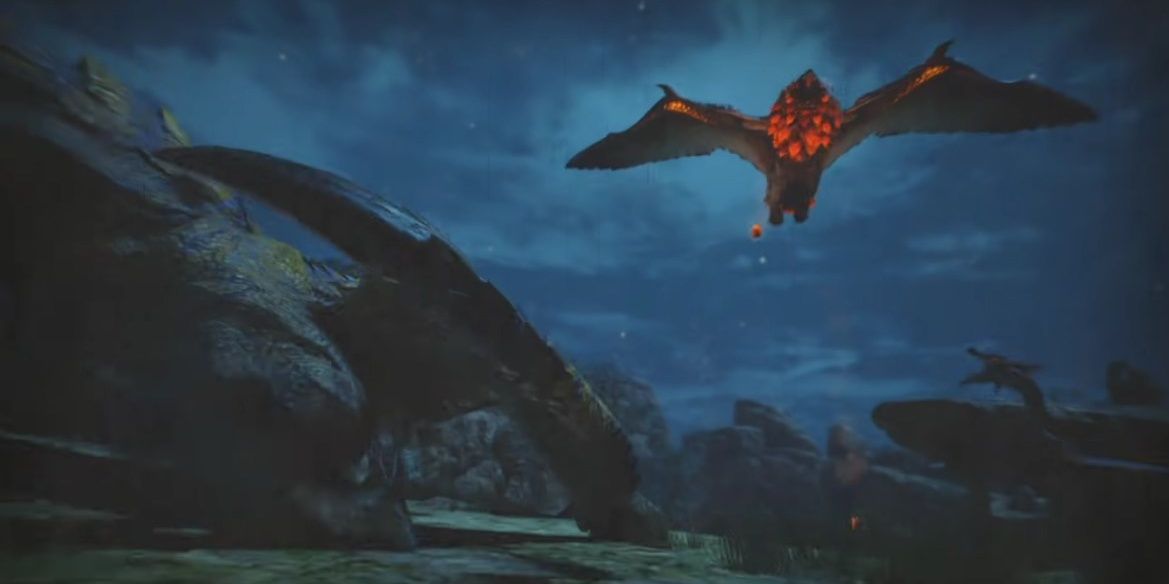One would expect the most popular monsters in Monster Hunter to be the games' flagships or final bosses. That's true for the most part, but a few other monsters slip through. Some are popular because their designs leave a huge impression, their fights are unique, or because they're just a pain. The Bombing Wyvern Bazelgeuse is all of the above.
The amount of memes and fan content spawned by Bazelgeuse is insane. It's come back for a second flyover in Monster Hunter Rise's first title update. Players unfamiliar with the Party Crasher ought to educate themselves quickly, lest their hunts go up in flames.
10 It's Named After A Massive Star...
This monster's name brings to mind the red giant star Betelgeuse. Found in the constellation Orion, Betelgeuse is one of the brightest stars in the night sky and among the largest visible to the naked eye. It's estimated to be anywhere from ten to twenty times the size of our Sun. Makes sense for a huge, explosive monster.
The name Betelgeuse is Arabic in origin, derived from a phrase meaning "House of Orion." Baz is Arabic for falcon. So, Bazelgeuse could translate as "Falcon of Orion," fitting for a fearsome winged hunter.
9 ...But No One Knows How To Pronounce It
Basil? Bezel? Goose? Bazelgeuse is certainly one of the most puzzling names in Monster Hunter. It debuted in World, the first installment to receive full voice acting. Annoyingly, the characters in the game never speak its name aloud. The Admiral prefers to call it "Egghead." So there isn't an official pronunciation yet.
The star it's named after is pronounced "Beetle-juice" (yes, like the movie). Following that, it would be Basil-juice. However, the monster's Japanese name is Bazerugiusu (バゼルギウス). A quick anglicization of this name gives the pronunciation as Ba-ZELL-gee-us.
8 It Looks Like A Real Bomber Plane
Fans have nicknamed Bazelgeuse the "B-52 Bomber," and that comparison is truer than it may seem. The monster's bulky body and tail "fin" make it look like a jet when seen in flight. Its huge wingspan and straight-outwards wing angle may be inspired by the Convair B-36 "Peacemaker," an American WWII bomber aircraft. The B-36 had the longest wingspan of any combat plane ever built at the time.
Bazelgeuse's roar is often compared to an air raid siren. If you turn off the game music and listen closely, you'll hear its plane theme extend to the noises it makes. Many of its grunts and growls seem to be mixed with engine noises along with the typical Monster Hunter snarls. When Seething Bazelgeuse takes off for its special "nuke" attack, it even makes a propeller noise.
7 It's An Elder Dragon-Level Threat
A special few monsters in the Monster Hunter universe are Elder Dragon-Level Monsters. These species are comparable in strength to elder dragons or able to bring major damage to ecosystems. Most Elder Dragon-Level Monsters are powered up subspecies like Gold Rathian or Soulseer Mizutsune. Some are powerful enough to reach this level with their base species. These include Rajang, Deviljho, Ahtal-Ka, and Bazelgeuse.
Being an Elder Dragon-Level Monster doesn't mean it can defeat elder dragons. In a Monster Hunter World: Iceborne cutscene, Ruiner Nergigante attacks a Bazelgeuse and assumedly takes it down. It also loses to the Fanged Wyvern Magnamalo in a Rise turf war.
6 Deviljho Is Its Rival
As a super-strong monster that often appeared as an unwelcome guest in hunts, Bazelgeuse frequently draws comparisons to Deviljho. A post-release title update added Deviljho to Monster Hunter: World. As expected, the two beasts cross paths and attack each other frequently. Bazelgeuse prefers to keep large monsters out of its territory, keeping all the prey to itself. The surplus in prey is what attracts Deviljho.
Bazelgeuse had exactly one Turf War in World, against Deviljho. Now that Bazelgeuse has come to Rise, many fans are anticipating the return of its old foe. Deviljho was extremely popular in the last game. It's very possible the two might meet again.
5 Capcom Likes To Sneak It In
Monster Hunter Rise's recent title update added Bazelgeuse. This was a shock to some, as it wasn't shown in any trailers or even mentioned in the official patch notes. The notes only state that "new monsters" will invade some quests, not what monsters those are. Amusingly, the cover is blown as soon as Elder Fugen outright tells the player to hunt it.
Unlike the "Forbidden Dragons," Bazelgeuse occasionally appears in merchandise and promotions. However, there was no mention of it in Monster Hunter World's pre-release material, despite being a pretty big part of the game. It seems they wanted the monster to be a surprise.
4 It Can Glide Huge Distances
Somewhat uniquely for a Flying Wyvern, Bazelgeuse doesn't flap its wings much to fly. It prefers to glide like a vulture, which lets it sneak up on its prey as well as conserve energy. It doesn't have the best taking-off power, so Bazelgeuse could find itself stuck in low places like canyons or chasms.
The Smart Biologist in Monster Hunter World mentions that reports of Bazelgeuse sightings have come in from the Old World. The New and Old World are on separate continents on either side of a large ocean. That means the migrating wyverns must have traveled thousands of miles over the sea.
3 Bazelgeuse Can Live In Any Biome
Bazelgeuse is a nomadic hunter similar to Deviljho. In World, it appears in every map except for Hoarfrost Reach. In Rise, Bazelgeuse hunts can take the player to any location, including the chilly Frost Islands. The Bazelgeuse Hub Quest is in a randomly chosen map each time. That really hammers home how much of an invader the monster is.
Bazelgeuse's roaming behavior might not be natural. Zorah Magdaros appearing during the Elder Crossing displaced many monsters from their natural habitat, including Bazelgeuse. The Elder's Recess is likely its home since that's where Seething Bazelgeuse appears.
2 Its Scales Explode Thanks To Bacteria
Bazelgeuse's special exploding scales are a hardened body fluid. It secretes the hot substance from "fuses" on the neck and tail, letting the air cool it to a solid. Much like Brachydios, the explosive property comes from a symbiotic relationship with micro-organisms. Bazelgeuse needs to drink a lot of water to prevent overheating, and it prefers watering holes with nitrate-producing bacteria.
These nitrifying bacteria are very much real, but they don't produce enough nitrate to cause explosive reactions. Such bacteria are important to ecosystems because nitrates act as fertilizer for plants. Perhaps Bazelgeuse's scales make the soil richer when they explode.
1 Bazelgeuse Can Sense Conflict
Bazelgeuse may be cleverer than it lets on. The Commission believes it can sense conflict and take advantage of the situation. Rise shows it taking advantage of a scuffle between Tigrex and some smaller monsters to assert its dominance. It only chooses to divebomb when its prey is at its weakest.
The Elder Crossing caused a huge spike in Bazelgeuse activity in the explored New World. This isn't just because of habitat displacement - the surge of energy made Bazelgeuse aware of the entire New World. Even after repelling Zorah Magdaros, it's empowered to expand its territory as much as possible.

